Another word for a “Two Face” is a hypocrite, and in some ways a hypocrite is a coward. A fearful person who appears one way but is another.
Many of the YouTube conspiracy buffs associated with this case spend their time sifting through details and detritus, looking for meaning and revelation. But it’s not in shadows or dolls covered in plastic sheets that the real answers lie. It’s somewhere else, somewhere more subtle.
One of the obvious idiosyncrasies of this case is not only Shan’ann’s OCD, but Chris Watts’ OCD. If Shan’ann was more about organizing and scheduling, Watts seemed preoccupied with numbers, cleanliness and self-grooming.
Those who dispute the OCD Narrative, or which to minimize it, do the disservice of breaking a vital fragment of the psychology from this case, and removing it from the main body. If we acknowledge that OCD was present within both of these people, where does it lead us?
There’s a long and a short version to the answer. The short version is that OCD is symptom of one simple thing: anxiety. It’s a psychological attempt to control anxiety. This suggests that both Shan’ann and Watts were – despite appearances, despite their public faces or social media avatars – privately insecure and unusually anxious.
This chronic social anxiety partially explains Watts’ motive. He was a weak man with a weak social currency, and in his mind destroying his family and making them disappear was the easier option than a messy divorce. Probably money factored into his decision-making, but it was driven by fear. Fear of retribution from a vindictive society if he did things by the book.

Coming back to Shan’ann, and her second face, when we take the OCD Narrative [as well as the anxiety] into the realm of MLM and Facebook, we see all the troubles that are there magically disappear. How? Through magical thinking. Suddenly the world is recast as a place where one can Thrive. All problems disappear as soon as I put a patch on my arm. What the MLM effectively is in this case is a proxy for the OCD. It’s an antidote against anxiety.
It’s also a lie, which shows how ultimately the efforts to control anxiety by putting on a brave face may fool a few people, but the real loser is the liar. We don’t learn by lying, we learn by living. We don’t grow or enrich ourselves by lying, but by advancing ourselves in reality.
Where these ideas bring us is to the original title I wanted to use for this post: The Psychological Connections Between OCD, Trauma and Victim Culture. Since I thought it would scare most people away I went with the kindergarten version.
Elsewhere on this site a discussion arose around the relevance of history. It doesn’t seem relevant, does it? What does a war in a previous century have to do with a family in Frederick Colorado? Everything and nothing. Everything in the sense that a myriad of forces we’re not aware of are forming our culture, and who we are, and who we respond to our circumstances today. And nothing, because the identities in this story were to some extent self-generated.
It’s important to consider both aspects in true crime – the cultural psychology aspect and the identity aspect.
We ought to be aware that “identity politics” was what fueled the Second World War. Identity politics is all about rallying around and identifying strongly with an idea. One identifies so strongly with this idea, that one’s identity becomes infused with it.
For those interested in this subject, I recommend a brief browse through the history of identity politics [written by the sociologist Frank Furedi]. Here’s an excerpt:
…the politics of culture has rarely allowed the forging of strong bonds between different groups, as today’s acrimonious dispute between feminists and trans activists shows. Human solidarity is one of the main casualties of identity politics. Once different groups retreat into their respective safe spaces, there will be little common ground left for those committed to the politics of solidarity and the ideal of universalism…
How identity politics appears in the Watts case is this tribal approach to identifying with the victim, or sympathizing excessively or inappropriately with perpetrator, and then the two groups bombarding one other with the backing of their respective political camps. TCRS actively discourages this practice, but it’s nevertheless a constant theme in true crime.
Identity politics is our own form of OCD. It’s our own version of trying to control or recast our anxiety. There is a lot more to say about the Culture of Victimhood as a general theme pervasive in our society, and also the victim psychology within the Watts case. What’s clear is during his “confession”, when Watts himself was becoming a real victim in his own story, he was offered an olive branch.

He was offered the chance to be the victim, and thus innocent of his own actions. This was ironic given the reason he committed the crime – it was a chance to no longer be a victim, and not be held accountable by his ex-wife for his actions [meaning his new partner could see him as innocent, or in his mind, as “who he really was”.]
When offered the chance to be the victim during his interrogation, Watts did this by making his murdered wife the offender.
Think about Identity Politics and idea of identifying with a Perceived Victimhood. Maybe you feel discriminated against because of your race, sexual orientation or some other reason. Maybe you feel diminished because of someone or something else. Maybe you feel your country is about to be overrun by immigrants. Maybe you feel someone or some class of people is invading your domain and will soon steal your job. All of this raises anxiety. At the same time, the source responsible for this narrative offers an instrument to sort it out [a wall, a patch, an exit, an army of the like-minded etc].
There is also a fascinating relationship between history and victimhood, in fact history tends to be used like a convenience store to prop up victimhood, especially in modern times. So after decades of silence on the subject, concepts like slavery and colonialism and the idea of privilege comes into vogue, at a time when – for example – colonialism is safely in our past. So why bring things up if their relevance to our actual lived realities is such a stretch?
Because it cuts to who we are. It cuts to the core of our own whys. And this is the attraction of true crime. We don’t realize it, but in some way, shape or form we identify with the circumstances of a crime as much as we are horrified and try to distance ourselves from it. Even when we blame and disassociate ourselves, calling the criminal names that makes us feel better about ourselves, we reveal our own shallow approach to the victim and their lived experience. We’re not expressing solidarity when we gravitate to a victim psychology, we’re doing the opposite: we’re separating ourselves from a universally lived existence, and we do that in an attempt to elevate ourselves [as innocent victims we deserve some sort of recompense, some compensation].
We need to move beyond imposing our own sense of Perceived Victimhood on how we see others, and how we see the world. Just as MLM recasts the world in an instant as a place filled with magical solutions and patches that can transform our lives, victimhood does the same. We wear a patch branded with a particular kind of victimhood, which allows us to belong to a fellowship of victims, and we may even pay money to do that.
TCRS is about seeing the people in these cases, not imposing our own narratives onto them.
It’s not easy.
I don’t like to discuss these concepts here, simply because they require a lot of background, and a lot of silent contemplation. I prefer to do due diligence to these ideas as a chapter within a narrative where it will resonate best, and where there are a lot of enriching references to sketch the psychology properly. Also, many who come here skating on the highways of Google, tend to be the least affected by them. This is a private and personal matter, and better debated and considered as part of one’s own internal dialogue.
Let me leave you with something from Psychology Today originally posted in June 2014.
Why would people loudly and publicly proclaim themselves as victims? Perhaps a better question, based upon the level of secondary gain, attention, protection and support received by these people, is why wouldn’t they? With all of the attention on the issue, why are we surprised when people are exaggerating, using, or downright lying, about victimization? Of course, when we attach benefits to identification as a victim, we will hear from more victims, both real and exaggerated. Acknowledging a history of victimization is healthy, but is that all that a person is?

True Crime Analysis, Breakthroughs, Insights & Discussions Hosted by Bestselling Author Nick van der Leek
Tag: Identity
Everyone knows what interiority is, although not all of us know that we know. To know what it is, we can start by saying what it isn’t. The opposite of interiority is exteriority: it’s the quality or state of being exterior or exteriorized.
Exteriority is what we see on Facebook, what we see at face value when someone has plastic surgery, and when we dress up to go to an important meeting. It’s Chris Watts giving his Sermon on the Porch. What we see on the outside, the face Chris Watts gives his questioners and his version of events isn’t necessarily the true face, in fact, it may be very untrue.
Interiority is the cosmos that’s unseen. It’s hidden, but it’s in many ways more real than what is seen [and what is seen to be real]. In true crime, interiority is probably the most underestimated and underutilized tool, and yet almost everyone is chasing after it, we just don’t know it.
Well, thanks True Crime Rocket Science, now you do.
It’s important to start with the basics; to know what we’re chasing after, and to define it, so that we can say either we’ve found it [if we ever do], or we can set up solving the problem of why it eludes us.

We will get less theoretical and more practical in a moment, but first we need to orient ourselves on the issue of exactly where interiority fits into the fuzzy business of profiling.
Again, don’t be put off my these dry-academic sounding terms. Think about this in the context of setting up a Facebook profile, or a Twitter profile. Our profile is a clunky way of telling the world who we are. First, we want to identify ourselves. Then we want to communicate what wonderful characters we are, so wonderful in fact that we’re better than some. Under the lie of character is a more solid foundation, that of personality. No matter who we say we are, or pretend we are, personality tends to leak through via set things like a dark sense of humor, or how introverted or inhibited we are, or our particular thresholds for fun, abuse or sex.
Interiority lies underneath all of these, almost like the yolk within a hardboiled egg. Our interiority is really who we are, and it’s also what we least like to reveal, hence the need for a shell and several layers of personality and character armor. Although interiority must manifest in some way into our authentic identities, who we appear to be [or we we say we are to the opposite sex, or on social media] is really dependent on how we see ourselves, and what we sell ourselves. Interiority tends be hidden even – especially – when we’re trying not to hide it.
In the above sketch character is analogous to the shape we construct of ourselves, and convey to others. Often the outline is an exaggeration, an inflation of the actual silhouette of the self. Unlike an actual egg shell, the character shell tends to shapeshift over time. The personality is the wobbly white layer underneath, it’s counterintuively more fixed than the character armour, but even so it’s not really getting to the golden center of who a person [or criminal] really is. Interiority provides the color, and just as it relates to eggs, its the bright gooey center where everything happens that matters.
The yolk is where life rises and manifests and becomes what it is, everything else is ancillary.
Another way of putting it – interiority is the skeleton holding together the tissue, the tree onto which the flesh anchors itself. If exteriority is loud, interiority is silent.
In the original True Detective series, Rust is by far the more introspective when compared to Marty. But over time, Rust has an influence on Marty, making him more sober about how he sees himself and others.

Now let’s get practical about this amazing psychological tool. In many respects, the Watts case is the epitome of exteriority. The fairy tale social media, the loud, expressive optimism of the neon colored Thrive patches and promises, and the focus on their appearances – both in terms of Mr and Mrs Watts.
What we want to know is what lay beneath that? Consider the parlance of the oil industry, a business that is entirely preoccupied with the interiority of the Earth.

It refers to elevators, fish, mud, pigs, worms, wells, treaters, hitches, moon pools, pay and kills, but none of these words mean what they do in our world. An elevator is a mechanism that closes around a drill pipe, fish refers to broken drilling ordinance, mud is drilling fluid, pigs are devices inserted into pipelines for cleaning, hitches are rig employee shifts, moon pools aren’t pools on the moon but pools on the ocean floor., pay is the rcash cow portion of a reservoir where the resources are buried, and a kills are those actions that stop or prevent a well from flowing [or leaking].

If this was the language Chris Watts was exposed to, how much of his world are we really aware of? And as for Shan’ann, well, there seems to be a reluctance by the living to prognosticate on the interiority [good or bad] of a murder victim. It’s seen as distasteful to want to know who someone was after they’re dead when a nice smiling photo will do. That’s the dominion of exteriority for you.
There is a way to delve deep inside the Watts family’s interiority, or at least just to acknowledge it, but to achieve this I’m going to have to trick you, to do a mindjob on you. Don’t worry, once it’s done you’ll know and who knows, you might thank me for it later.
Ready?
Understanding the Interiority of a Cat
True story. Over the past week I’ve been babysitting a friend’s cat. While researching these issues of identity it was inevitable that I’d start to test these thoughts on my new and temporary house guest. Since cats can’t speak, how do we know who they really are? Well, through their interiority.
This cat, who hasn’t been named yet, is male, first of all, and as cats go, very good natured. Often cats are independent and bristle at too much human contant, but this fellow is very companionable. He’s still he’s own person, and likes to do his own thing, and likes to play, but he’s just as comfortable giving attention as he is receiving it.
He’s no pushover though. When I have a tall glass of water beside my desk, he’ll dip his chin into it and out comes the little triangle of pink tongue. When I added the glass of water to a shorter glass, which had a little milk residue in it, the cat wouldn’t touch it. It no longer looked potable. His toilet habits are similar. His owner dropped off a tub with fragrant gravel, almost like taking a shit in a sand dune of washing powder. Kitty didn’t like that either; instead he found a decent potplant with real soil in it, and did his business there. This cat’s got standards.
Perhaps the most fascinating aspect was the cat’s need to be let outside. Some cats are introverts and homebodies, not this one. Although he naps like the best of them, he’s definitely a roamer, and likes to hunt. His owner says he recently caught a local bird – a Hoepoe – and the trauma of seeing and hearing this incredible creature bleating for its life while having its feathers ripped from its body still lingers. So in spite of a cat’s sweet nature, it’s also – fundamentally – a hunter. A killer. That’s who he is and who he wants to be. That’s what excites him most, and when he plays, he’s playing at the idea of hunting. And killing.

For reasons I won’t go into here, the cat had to be chaperoned during its scheduled time outside of jail. Since the security complex I stay in is like a honeycomb, the risks of it getting lost are high, and so, for its own good, the cat has to be repressed, limited, trapped inside someone else’s scheme for what’s good for the cat.
Whether this is what’s best for the cat is unclear; if the cat could talk he might say: Fuck you, if I go out I’ll find my way back. I don’t need to be supervised asshole. But since he can’t talk, and since his owner found him precisely because he went on an extended walkabout, I’ve had to curtail his freedom.
There’s a lot more to go into, his annoying habits, his manners, his sleeping, eating and shitting patterns. One particularly annoying habit is the cat’s horniness, but it’s also a reminder that cats [like people] are only human after all. They have to do something with those impulses, and when you’re locked indoors against your will, and your nature, well, something’s got to give.
See what I just did there?
We’re far more comfortable discussing and acknowledging the interiority of a cat. When we do this with people we feel we’re being judgmental or projecting stereotypes – whatever it is people find it objectionable. What we’re doing when we’re exploring interiority is trying to put together a profile. Profiling may not be nice in the real world, but it happens all the time. Voters are profiled, recruitment agencies profile their employees, we profile ourselves continually on social media while stalking those of others. We just don’t like to admit that it happens.
Profiling in true crime isn’t an option. If we want to get to the authentic narrative, we have to develop a better profile than the one the criminal offers to us. But because we avoid doing this in polite society, we’re a bit rusty when we’re called on to evaluate people in true crime. Also, there’s an inference that interiority doesn’t exist, or that it’s not important, and so it often falls by the wayside.
In fact interiority is the most important aspect in true crime, because it’s the actual subjective experience of the criminal’s world, the way he sees others, and himself in his world. It’s also by far the most undiscovered country in true crime. #TCRS uses interiority to drill down through the shell, penetrate till we hit paydirt, and then we can extract this inner world and pump it to the surface.
In conclusion: From this brief interlude into this cat’s life, I was surprised what a complex “person” even a small animal can be. If animals have their own highly developed interiority, and we know how deeply that impacts on a person inside their home, imagine how the interiorities of people inside a home bubble, froth and fizz over time like chemicals in confined spaces. Chemical reactions are inevitable.

And so, in my analogy, just as I’ve trapped a cat in my-agenda-of-what’s-best-for-him, he’s also trapped me. I’ve constantly got to monitor, control and supervise him, since I’m not willing to trust him and not willing to give him the freedom to be fully his cat-self. We’re both trapped in an agenda, my agenda, which is born of a particular skewing of one’s interiority. Since kitty has been here, I haven’t been able to come and go as I please either, or leave doors open, and his miaowing at night [to go out] hasn’t been fun. Over the course of a week it’s been exhausting, like having a small child around.
When we hold someone or something prisoner, the jailers become prisoners too. And as the weeks roll into months, months into years, two contesting interiorities can completely and utterly exhaust one another. Is it a coincidence that Shan’ann died so late at night, so long before the day? It was late in the lifetime and the life expectancy of their marriage too, wasn’t it? If so, then somehow the marriage gad been artificially extended way past its sell-by date.
Who would have done that? Would would have the most to gain or the most to lose by doing that? Interiority is the key to finding these answers.
Someone in the Watts home was keeping someone else in jail – excessively – and it led to murder most foul.

© 2025 TRUE CRIME ROCKET SCIENCE
Theme by Anders Noren — Up ↑
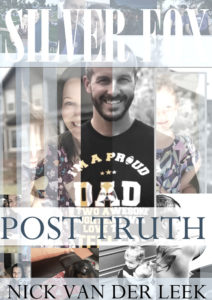
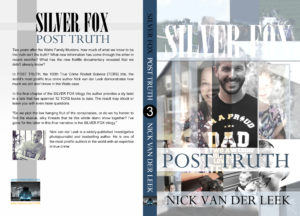



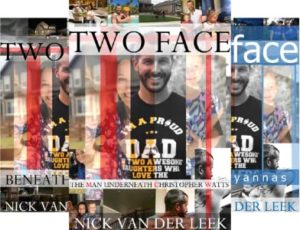



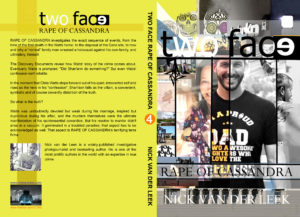
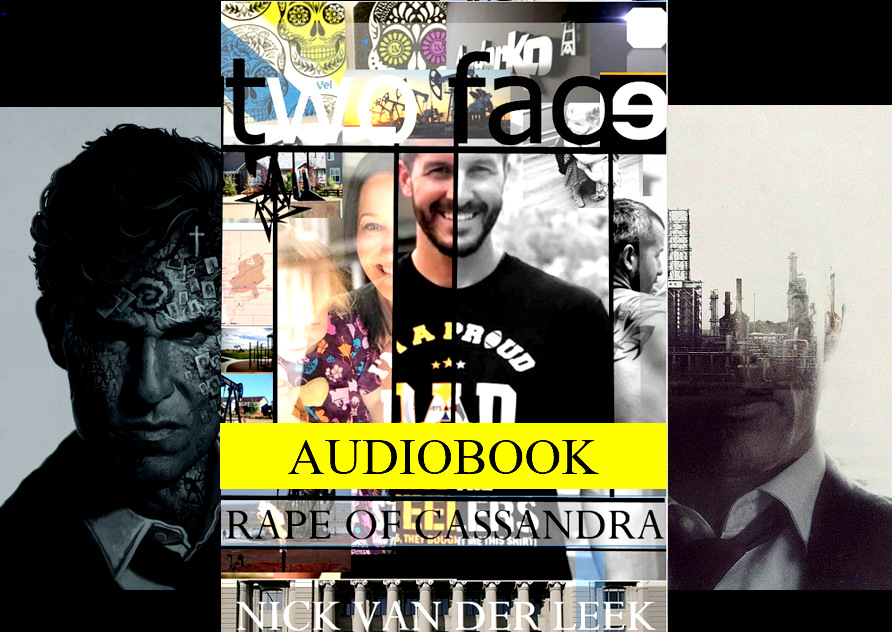
Recent Comments